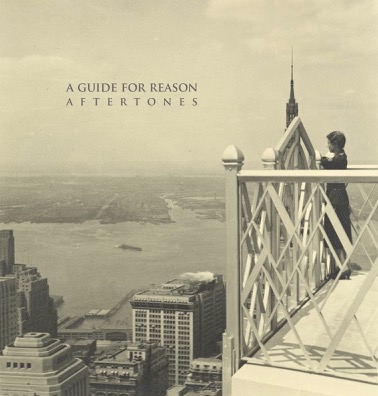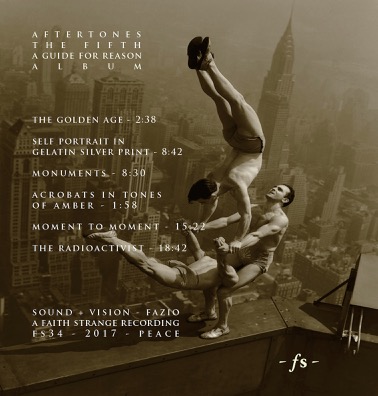
July 2025

A Guide For Reason
A Brief History Of Imperial Collapse
fs 102
The Twentieth A Guide For Reason Album.
Never forget - the higher we soar, the smaller we appear to those who cannot fly.
March 2025

A Guide For Reason
The Belief In Constant Progress Ends In Disappointment
fs 93
The nineteenth A Guide For Reason album.
If they existed, under the plastic reality, somewhere, they would be, in spite of their proven, but deceitful, opprobrium, gall, planets that they would inhabit shame. Imagine them for a moment, brought together in a company with substances similar to their peers. It's an unbroken succession of fighting, which will not dream of.
They're blood streams, in these regions. Chaotic full of hydras and minotaurs, and from where the dove, frightlessly, smashed with a wing drawer. It's a pile of Apocalyptic beasts, who are aware of what they are doing. They're shocks of passions, irreconcilabilities and ambition, through screaming of a pride which does not allow itself to be read, is contained, and of which no one can, even approximately, probe the pits and shallows.
Isidore Ducasse, 1870
January 2025
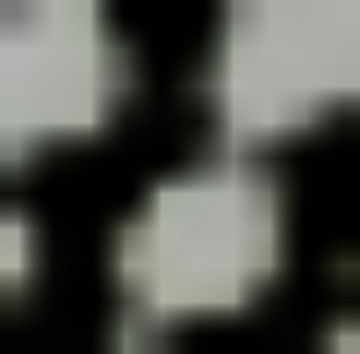
A Guide For Reason
And So Art Resides On The Very Same Street As Life, But In A Different Place
fs 91
The eighteenth A Guide For Reason album.
A Guide For Reason
Requiring A Certain Degree Of Inner Struggle
fs 90
The seventeenth A Guide For Reason album
We have divided life as the outer and the inner. The inner is more complex, more difficult to understand, and so we have given much more emphasis to the outer.
- J. Krishnamurti
A Guide For Reason
The Art Of Effective Dreaming
fs 89
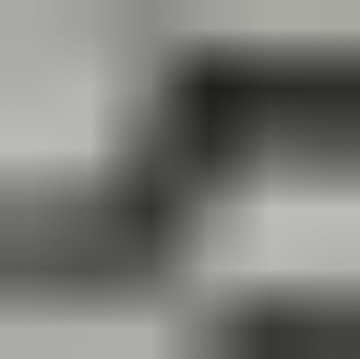
The sixteenth A Guide For Reason album.
Man is immersed in dreams... He lives in sleep… He is a machine. He cannot stop the flow of his thoughts, he cannot control his imagination, his emotions, his attention... He does not see the real world. The real world is hidden from him by the wall of imagination.
- G.I. Gurdjieff
June 2024
A Guide For Reason
The Force Of Circumstances Become Mirrors
fs 81
The fifteenth A Guide For Reason album.
Wealthy men shower their overindulgences on the poor,
But he who is hungered is the clear mirror of bread -
The tinder is the mirror of the flint and steel.
He began to cleanse the defects from the mirror of his lover's soul and from that day forth revealed that love he had promised to his lover- not within him, not directly, but mirrored all around him, in the faces and the tears of others, allowing his lover to be privy to their hearts, to their longing, and to their souls.
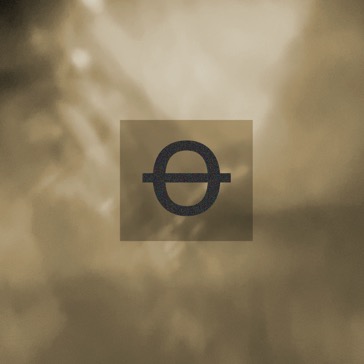
Available digitally everywhere.
August 2023:
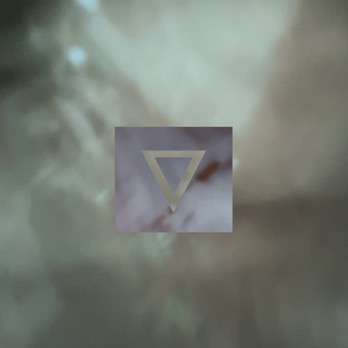
A Guide For Reason
There We Sang The Shouts Of Joy
fs69
The fourteenth A Guide For Reason album
August 2023:
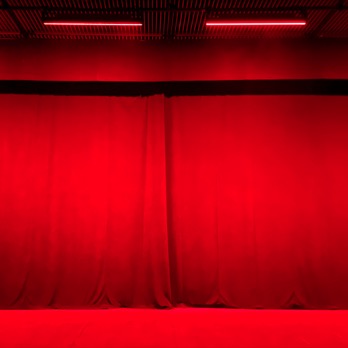
A Guide For Reason
Huis Clos
fs68
The thirteenth A Guide For Reason album.
May 2023:
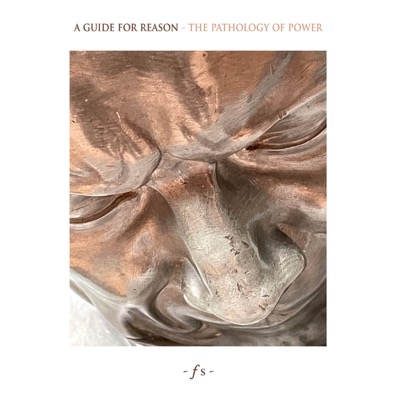
A Guide For Reason
The Pathology Of Power
fs67
The twelfth A Guide For Reason album
February 2022:
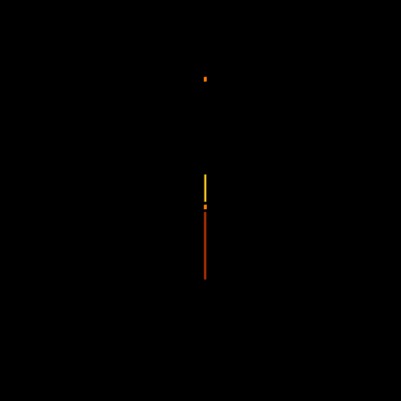 title: The Spark
title: The Spark
artist: A Guide For Reason
catalog#: fs60
format: open edition 24 bit / 48k download (high resolution aiff, wav, mp3, flac, alac, etc.) through Bandcamp
The Spark - the eleventh A Guide For Reason album
The Spark is a musical concept that began a very long time ago, in a much different world than today. This is just one remembrance of the past.
Concept - Fazio / Hamlin
December 2021:
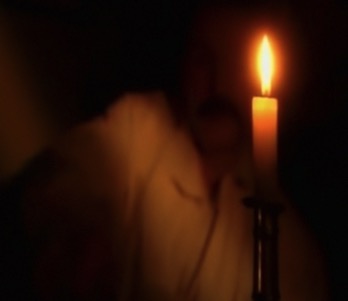
title: Iron In The Soul
artist: A Guide For Reason
catalog#: fs57
format: open edition 24 bit / 48k download (high resolution aiff, wav, mp3, flac, alac, etc.) through Bandcamp
Iron In The Soul
the tenth A Guide For Reason album
a faith strange recording - fs57
24bit / 48K hi fidelity
There is only one day left, always starting over: It is given to us at dawn and taken away from us at dusk.
Jean-Paul Sartre
March 2021:
 title: Perseverance
title: Perseverance
artist: A Guide For Reason
catalog#: fs51
format: open edition download (high resolution aiff, wav, mp3, flac, alac, etc.) through Bandcamp
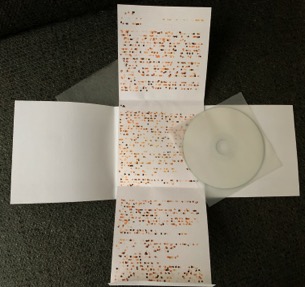
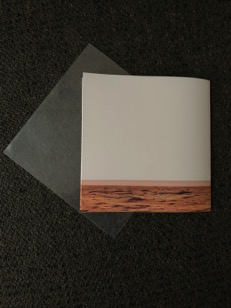
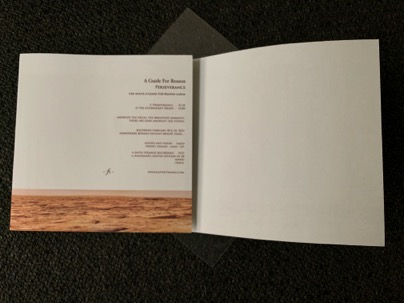
handmade CDR: SOLD OUT
Perseverance - The ninth A Guide For Reason album
Amongst the decay, the brightest moments.
There are gems amongst the stones.
Recorded February 20 & 24, 2021, somewhere beyond distant bright stars…
February 2021
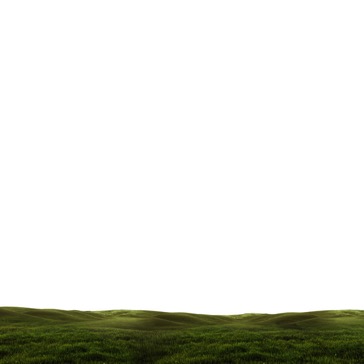
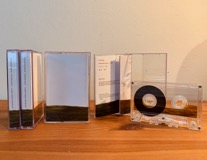
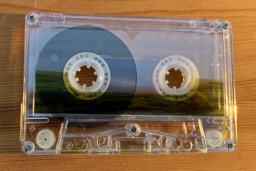
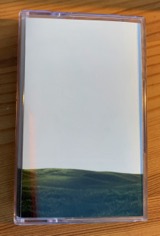 Winston Smith
Winston Smith
Winston Smith - The eighth A Guide For Reason album
May all of your Orwellian dreams come true (if they haven't already)
1: Winston Smith - 20:00
2: 2 + 2 = 5 - 3:16
3: Julia - 6:00
4: The world of meaning and of causes becomes gradually the world in which he finds happiness = 28:56
a faith strange recording - fs50 - 2021
Unlimited open edition in digital form though Bandcamp
Strictly limited one time edition of 40 pro-dubbed / pro-printed transparent cassettes.
from Vital Weekly:
A GUIDE FOR REASON - WINSTON SMITH (cassette by Faith Strange)
Following that with A Guide For Reason makes perfect sense, as this is Mike Fazio's project in the realm of experimental music. I was wondering who Winston Smith is, but seeing this on the Bandcamp page, "May all of your Orwellian dreams come true (if they haven’t already)", I realized that was the protagonist from '1984'. Maybe this is Fazio's comment on the current state of world affairs? "The world of meaning and of causes becomes gradually the world in which he finds happiness", is the title of the piece that spans the entire second side, and maybe a statement about people who find 'truth' online? As I am playing this, I wonder if what I just wrote is true, the thing about guitars? It is difficult to hear guitars in the music of ÆRA, but stretching out guitar sounds in that manner, is a common thing. The way it is done on 'Winston Smith' is even more abstract, and it could be synthesizers, sequencers, samplers and/or rhythm machines at work here. What is left is the atmospheric quality of the music, but collage-style, noisier at times, even a bit industrial at times, and abstract. It is also more dynamic, going through various volume motions here, from relatively quiet to pleasantly 'loud'. I was thinking that I would not be surprised if some of this material is generated from field recordings, along with whatever else is played by Fazio. Maybe it is all too easy to say this is a dystopian soundtrack, but I can imagine some passages of this, could be transferred one on one to a film soundtrack. As pleasant as it is frightening. That's how we love our dystopian fantasies. (FdW)
August 2020

XXV - XXVI
1: I Didn't Like Having To Explain To Them, So I just Shut Up, Smoked A Cigarette, And Looked At The Sea - 28:36
2: Now The Only Moral Courage, Which Is Useful Here For Judging The Puppets And Chatterboxes Who Pretend To Speak In The Name Of The People - 20:28
a faith strange recording - fs45 - 2020
Unlimited open edition in digital form though Bandcamp
March, 2020

Amerika (the revolution will not be televised)
I thought of you.
Out of the blue.
Two days ago.
Now I know, your spirit flew over mine.
Safe trip home.
- for Genesis
Amerika - the sixth A Guide For Reason album.
Original music recorded for the short film “Rise And Fall” Spring 2018. Further editing produced tracks 3 & 4 of this edition.
Tracks 1 & 2 produced March 2020.
Tracks 3 & 4 recorded Spring 2018
Tracks 3 & 4 originally titled "Rise" and "Fall" respectively.
Promotional video for previewing can be found at vimeo.com/256797712
a faith strange recording - fs37 - 2020
Unlimited open edition in digital form (high resolution aiff, wav, mp3, flac, alac, etc.) through Bandcamp
A Guide For Reason
Aftertones
(fs34)
|
A collection of works to induce a dream state, whether during waking hours or during REM.
Keeping with my long time interest and research in memories and dreams, their origins and their consequences on our daily lives, this collection of music continues that thought process and is intended to expand ones outlook on what is and what could be, in a perfect world.
The digital format and to a slightly lesser degree the memory stick format can open up a world of experimentation for artists today, if one chooses to keep an open mind, musical formats that do not adhere to the physical limits of hard formats such as the CD, CDR and vinyl LP. This collection of music could have easily been 300 minutes or 30 minutes but in the end I settled with a length of 55 minutes. I could very easily envision these dream drones lasting for hours.
-mf-
|
Limited edition usb drive with 24bit / 96k files - edition of 18 (SOLD OUT)
second limited USB run will be available March 2017
An unlimited digital release in wav, aiff, mp3, flac, alac and other hi-resolution digital downloads through | Bandcamp

| | 
A Guide For Reason - XIII - XIV (fs22)
One time strictly limited hand made micro edition of 50 CDr's. Presented within a handmade vellum tri fold cover with insert inside a handmade die cut folio
1) The Wonder Room (Letting Through All The Hidden Powers) - 19:58
2) The Road To The Beginning Again (What Gets Left Behind To Which One Always Returns) - 20:42
album preview
REVIEWS:
from Musique Machine:

A Guide for Reason is a musique concret / deep listening avant garde project from experimental guitarist Mike Fazio, a veteran who has released countless albums in the previous 20 years under aliases such as orchestramaxfieldparrish and Aera as well his own name Mike Fazio, most with very limited distribution. The sound of his work is most often a liquid, freeform textural ambience created with a combination of guitar and digital FX, containing soothing consonance and beautiful tones as well as eruptions of chaotic noise and a haunted feeling.
"XIII - XIV" is his 4th release under the A Guide For Reason name, the two length 20 minute tracks on the album naturally succeeding the two on the "VII - VIII" EP in 2011. This was possibly my favorite Fazio release of all I've heard, a vibrant yet simplistic 20 minute release in which most of the music involved a single sound which fascinates me still, sounding something like a recording of a glass object bobbing in water run through a vocoder to take on the rainbow halo of a synthesizer chord.
A Guide For Reason tends to be a spacious form of music, zeroed in upon the subtleties of individual sounds in succession, or 'gestures'. This album, I feel, represents a more complex soundscape that I've heard in the past from this alias, but generally keeps this gestural mode of progressing through ideas.
The complexity comes from the vast number of total sound sources and sections. It is difficult to summarize what the music on this album sounds like, because it changes roughly every 2 minutes, the larger 20 minute tracks serving as pastiches, a 'connect the dots' journey through countless tiny fragments or micro-movements. I tend to enjoy this style of avant garde, as it prioritizes the listener's attention span, allowing many understated or subtle ideas to be introduced without succumbing to the exhaustion of bare, prolonged minimalism. A good example of another record paced this way would be Nurse With Wound's "Spiral Insana", or more recently Steve Roden's "Berlin Fields", something of a pastiche of field recordings. I understand, of course, the motivation for creating slow paced, longform soundscapes, but they need not all be this way.
Fazio's guitar is not easily found on this recording, the sounds taking a more abstract, disconnected character much of the time, with sweeps, whooshes, phasing circular loops, and swells of static which are classic 'synthesizer'. Particularly at the start of the album, there's a lot of emphasis on chittering electric buzzing, humming and other unnaturally crisp digital noise that would fit right in on the Raster Noton label, or in the work of Japanese synthesist KK Null. These higher frequencies are just sharp and clear enough to have potent psychic effect, but generally does not become harsh (especially not compared to KK Null).
Halfway through the first piece, titled "The Wonder Room (Letting Through All The Hidden Powers)", we are treated to some tape noise, the pitching warbling up and down, squeaking across the head like a skidding car. Sublime vocoder sounds as per the previous EP emerge here and there, less of a focus than before, but drastically the diminishing the colder, more alienating aspects of the soundscape. At times I feel like I'm listening to Aube, his nature derived loops chewing relentlessly on into my mind, and other times the tone is more like early 90's German downtempo, a pleasure soaked vision of utopia, a feeling of deep relaxation. The blissful 'dub chord' common across most genres of chillout electronica can be heard resonating in numerous places, such as the 18 minute mark of the 1st piece, which starts to resemble the work of Oval.
The two larger pieces, similar in length, are also similar in style, the second simply providing another long succession of moments within the same universe. Listening to the album on headphones in the dark, one would not likely notice the transition from first piece to second.
I think this is one of Fazio's deepest and most interesting albums, with nearly endless replay value, as there's bound to be some excerpt of sound left unnoticed within such a dense collage. It's one of the less personal or overly emotive works by Fazio as well, containing only hints and wisps of melody and conventional musicality, and none of the spoken samples found on several of his other albums, instead approaching the tinier sounds of the world with an analytical ear. This makes it easier to listen to than his album "Interiors", for example (released as Mike Fazio), which was an emotionally draining experience. This one is certainly a favorite, recommended to new and old fans of Fazio's work.






Josh Landry
from A Closer Listen:
In the digital age, one has a begrudging admiration for the few artists who still insist on doing things the old school way. Mike Fazio (A Guide for Reason) is one of these. After three years of commercial silence, he has returned with the latest volume of what he calls “difficult music.” He’s correct to term it “difficult,” but only in comparison to mainstream music; there’s nothing off-putting about XIII-XIV, as it simply requires patience.
Patience is one thing Fazio has in spades. He’s patient enough to create a worthy physical artifact for the 50 people who will be able to procure a copy of this disc (let’s make that 49, because I’ve got one). He’s patient enough to record two slowly-developing, 20-minute tracks. And he’s patient enough to wait for any acclaim, knowing that he’ll never be accepted by the mainstream. Nor does he wish to be; after decades in the business, he’s content to have procuratorial control.
One is never quite sure what to expect from a Fazio release. Sometimes his albums include spoken word, other times electronic beats. The length of the tracks often determines their internal variety. “The Wonder Room” is a series of tonal experiments, wafting through the speakers like an electronic breeze. If one could hear all of the circuits in one’s house as they were activated, setting and resetting themselves, it might sound something like this: soft feedback, sine loops, perceived patterns. When a more piercing tone enters in the 8th minute, it’s like a quiet alarm, signaling a shift to a more active segment. And two minutes later (remember, it’s slow-developing), the scratch of a record beneath a needle launches a louder series of sequences. Only at the very end does something resembling techno appear: the best location for a light climax.
The album’s strength is its consistency. This time out, Fazio seems to be following a specific sonic vision, uninterrupted by the more obvious inclusions that made prior works seem jagged. “The Road to the Beginning Again” starts with the same density as “The Wonder Room” ends before retreating in volume, allowing for a smooth flow. At 2:40, it is nearly silent, save for an electronic current that sounds like a contrail. That piercing tone reappears soon after, connecting the two works. But the electronics are subtly different, sounding more like typewriters and insects than circuits and wires; and their speaker-to-speaker travels are more intense. Again, one has the sense that something is building, but the reveal doesn’t appear until the end of the 12th minute: and true to the form of the album, the drone remains restrained even as it advances.
Nothing on the album beats any other part of the album into submission. This tuns out to be his best set to date. By the end, we’ve realized something new about Fazio, and perhaps he’s realized it about himself as well. On XIII-XIV, he comes across as the opposite of The Hulk ~ the subtler Fazio gets, the stronger he gets. (Richard Allen)
from textura:
A Guide For Reason: XIII - XIV
Faith Strange
Mike Fazio issues material so infrequently on his Faith Strange label that when a new release does appear it feels all the more special. The first installment of his A Guide For Reason project, I - VI, surfaced in 2009 and was shared with a close circle of friends and fellow artists; two years later the second edition materialized, this one titled VII - VIII, naturally enough. By his own description, the project is an “abstract, exploratory, and left-field musical endeavor” whose “difficult” music isn't created with commercial or personal gain in mind. As is his wont, Fazio offers minimal detail about how the material on this latest chapter was generated, preferring instead to let the music speak for itself and for the listener to experience its two long-form soundscapes on their own terms. Again, in Fazio's own words, “This music has no purpose other than it is.”
On some of his recordings, guitar playing is front and center (see 2012's Quiet World release All At Once The Remote Go Forth My Soul And My Seeking, The Unknowable Becomes Known, for example); the A Guide For Reason material, by comparison, shifts the focus away from guitar—at least insofar as it's recognizable as such—for a more abstract presentation where instrument identification recedes in importance. Again the focus is on sound in its pure form, even if it's instrumental and by its very nature abstract.
The music certainly isn't lacking in incident. Throughout their twenty-minute explorations, the two pieces mutate with regularity, altering their shape from one moment to the next in natural manner. Like fingerprint whorls, their respective parts assemble into logical yet unpredictable wholes, and the circuitous paths the settings follow as they advance towards their destinations are packed with micro-detail.
After “The Wonder Room (Letting Through All the Hidden Powers)” emerges from an industrial-tinged mist, curlicues of fluttering sound appear, and in the minutes that follow Fazio shows himself to be an attentive and nuanced sculptor of sound. The material convulses with rhythmic insistence during one episode, not so dramatically that the overall balance of the piece is negated, while in another sonar-like blips form a melodic motif of sorts alongside percussive whirr and thrum. Operating at a slightly more restrained dynamic level, “The Road to the Beginning Again (What Gets Left Behind to Which One Always Returns)” continues the aural stimulation with a potpourri of contrasting sounds: insectoid clicks, metallic scrapes, and ambient hum suggestive of overhead planes among them.
Though of course one could describe the pieces by itemizing their details in the order in which they appear, doing so would arguably miss the point. In these are settings, the details are important, yet it's the whole—their gestalt, if you prefer—that's critical. That is, they should be experienced as wholes, not parts, even if those wholes are restlessly shape-shifting. As is always the case with a Fazio production, the release (prepared in a hand-made edition of fifty copies) has been presented with great care, with in this case the CD-R housed inside a tri-fold cover, itself within a fold-out, die-cut cover.
June 2015
from Vital Weekly:
A GUIDE FOR REASON – XIII-XIV (CDR by Faith Strange)
Great, pro-printed package here, which lifts the whole thing up, from a mere CDR to something beautiful. Mike Fazio, the man behind A Guide For Reason, created two new pieces, of twenty minutes each and in an ideal world this would have been released on LP. There is no mention of any instruments – as always – and in the past I guessed stuff like guitar, effects, synthesizer, tapes and e-bows, but in these two new pieces I’d say sound processing is the most prominent feature, and perhaps it is all from acoustic sources; heavily treated of course, as this is very much in the world of musique concrete, acousmatic music and electro-acoustic. The computer is at the central stage of processing, editing and mixing these compositions. I might be entirely wrong of course. The looseness of his music, which I found on his previous releases seems to be gone here and throughout I found these pieces more composed. A Guide For Reason moves from blocks to blocks in these pieces, linked together and each section is worked out pretty neatly. At times reminding me of Asmus Tietchens in his post-2000 music, but also harking back to Tietchens’ earlier work (‘Abfleischung’ for instance) in the louder parts of this music. These two pieces show Mike Fazio in great form in composing some truly engaging beautiful music. (FdW)

A Guide For Reason - Iconography (fs16)
Brand new music from the A Guide For Reason project, recorded March, 2013
Strictly limited edition of 200 glass mastered cd's in gatefold mini-lp sleeve - will not be reprinted
1) Hero - 17:26
2) Heroin - 17:38
3) Goddess - 17:28
4) Godman - 21:48
REVIEWS:
from Wonderful Wooden Reasons:
A Guide For Reason - Iconography
(Faith Strange FS16) CD
Those of you who keep a regular eye on my witterings here at Wonderful Wooden Reasons will possibly have noticed that I am a bit of a fan of the work of New York's very own Mike Fazio who is the ever so lovely chap behind this here project (and also orchestramaxfieldparrish). Under that other guise his music is a big and bold monolith of sound that towers over you, here he's gone for a very different approach and incorporated delicate ambience, ticking rhythms, electronic flutters and flurries and occasional oneiric melodies.
It's by far the most melodic, immediate and warmly beautiful set of music I've heard Mike produce and without meaning even the tiniest of slights against any of his previous work I think it is by far the best thing I've heard him do. It's so easy to get lost within these twisting, flickering warping sounds as they weave through the air and so difficult to leave them behind at the albums close.
Beautifully strange and strangely beautiful.
(www.faithstrange.com)
from textura:
Mike Fazio's artistic journey continues, with this time the guitarist / sound sculptor making two albums available under different names. Consistent with the artist credit and album title, Interiors is an intimate portrait that reveals much of Fazio's personality, whereas the third A Guide For Reason release feels more like the sound of Fazio exploring different possibilities in his home laboratory. Consistent with the past output of the master craftsman, both are treats for audiophiles, having been recorded and mastered with immense care and attention to detail (note that the first fifty copies of Iconography include a free download code for Interiors).
Recorded during 2010 and originally included in a private pressing of the four-CD box set Music From The Strange Box, Interiors isn't fresh out of the box, so to speak, but it sounds no less fresh than had it been laid down yesterday. Armed with electric guitar, pedal steel, tapes, synthesizer, electronics, e-bow fretless bass, and 78-RPM records, Fazio presents three long-form settings of contrasting character and episodic design. A playful side surfaces in the opening moments of “The Start. The Shift. The Cleave.” when a half-minute sample of early-20th-century jazz appears before the needle lifts and the channel switches to guitar-based soundscaping. Time slows as gently swelling six-string washes spread themselves across the open fields, their creep so subtle as to seem imperceptible and distortion subtly seeping into some of the overall soundfield. The addition of synthesizer to “The Slow Night. The Scented Room. The Outside In.” gives the material a deep space dimension, while the clipped voice samples, evoking the cinematic character of a ‘50s detective mystery, alter the tone dramatically once again. The most striking thing about the piece, however, is the guitar playing, which offers a rare sampling of Fazio soloing. Eschewing effects, the bluesy playing feels extemporaneous, as if he's responding spontaneously to the previously constructed backdrop. A brief sample of “Mood Indigo” ends the track, after which epic swirls of haze and mist in “The Unanswered. The Lost Words. The End.” plunge the listener even further into deep space. Worked into the arrangement is the voice of a scholarly elder pontificating on entropy and death, with one phrase in particular—“It wears out”—repeated over and over. Fazio's self-described “collection of arcane scenarios” adds up to a striking and highly personalized portrait, each piece contributing something different to the listener's impression.
If Interiors' foundation is guitar more than anything else, Iconography shifts the focus to electronics and the simulation of explorative small group interaction. Fazio liberally stretches out on the recording's four tracks, which are perfectly tailored for a double-vinyl format with three in the seventeen-minute ballpark and the fourth twenty-two. In the opening “Hero,” drums and bass lock into a fleet-footed krautrock groove that remains in place throughout, even if it does shape-shift and gradually merge with the mutating electronic elements within the piece. By contrast, “Heroin” eschews conventional bass-and-drum rhythms altogether, opting instead for a full-on foray into electronic experimentation—think seventeen minutes of trippy whirrs, warbles, and whooshes—before rhythm elements subtly sneak back in during the track's second half. Dub-associated sound design also works its way into the recording, specifically at the end of track two, and Fazio changes things up even more by powering the third track “Goddess” with a funk groove, of all things (when, that is, it's not being derailed by constant smatterings of electronic smears and ripples). Certainly the recording lives up to A Guide For Reason's billing as “abstract, exploratory, and left-field” music; explorative in the extreme, it suggests some degree of affinity with the works of early electronic pioneers who allowed their pursuits to take them into the boldest of realms (Iconography's final piece, “Godman,” is especially indicative of the tendency, despite the ethereal setting's generally soothing tone). But, as interesting a listen as Iconography is and while it's no doubt as personal a project for its creator as Interiors, it's the latter that I'll return to more often, largely because it offers a more guitar-oriented portrait of Fazio's music-making.
August-September 2013
from a closer listen:
“This music has no purpose other than it is”, writes Mike Fazio of his musical guise A Guide For Reason. We wll be happy to amend that statement, because listeners may use this odd music for other purposes: relaxation, mood enhancement, the satisfaction of an avid curiousity. We imprint ourselves on our icons, transforming them into our projections, whether or not they care. (They don’t.) The bowler-topped figure on the cover may be worshipping a triangle, or an image of a triangle, or an imitation of the Eye of Horus, but his look of ownership and expectation (“Mine!”) is akin to that of a music collector who has just acquired a rare limited edition. Of course most hard copies are limited of late, but Iconography has an especially small run.
The third in an ongoing series that began with I-VI and continued with VII-VIII, Iconography is the first entry to bear a non-numerical title and is also the least abstract of the three. This does not, however, make it accessible. Four tracks, 75 minutes, no radio hits. And yet one can almost - almost - imagine edits of these tracks appearing in clubs, or even in the background of a Kanye West song. ”Hero” is beat-happy in such a way as to celebrate the beat, the rhythm, and the steadiness of sound, despite an early change in tempo. The track captures the pace and the purpose of a club hit without allowing its timbre to approach club status. It’s both a skeleton and an homage.
The more dronelike “Heroin” flirts with static and hum, daring listeners to find an access point. Yes, it seems to be saying, I could, but why? To paraphrase Fazio, “it is what it is”, and when it pivots mid-piece to hiss and clack, one thinks of a very miffed feline in a factory; but then, as if relenting, Fazio allows a brief series of beats to emerge. The final 2:59 seems to stand alone, looking back on the preceding minutes through synthesized eyes, judging with impunity. This isn’t the future, but an alternate present. Even when drums and bass emerge in “Goddess”, the listener stays suspicious, and these suspicions are rewarded when the rug is pulled from under the feet. The dance continues to the bitter end, with neither side gaining much traction. After the 22-minute closer has faded, the listener is left to wonder, “Could there really be no other purpose?” But of course there is: to prompt conversation about expectation and execution. Faith Strange is a perfect name for Fazio’s label, as his releases rest just on the periphery of understanding, icons in their own right. - Richard Allen
from Avant Music News:
A sprawling project slimmed down by an elegant solution. “Iconography” is the latest recording in an “ongoing abstract, exploratory and left-field” endeavour named A Guide For Reason, launched by American artist Mike Fazio in 2009 but rarely shared outside a small circle. This edition contains four lengthy tracks of amorphous, tentatively-searching electronica which, as the Faith Strange motto has it, “has no purpose other than it is”, which one supposes is existentially reasonable enough. Broadly ranging and never in a hurry, more perplexing than the almost altruistic and thoroughly engrossing “Élégie” of last year, “Iconography” will eventually find pressure points in the imagination of the right listener. For this one, it was the lambent ambience of the final track, “Godman”.
Accompanying the package is an insert upon which is printed the digital download code for the album “Interiors”, taken from a limited edition, four-disc set called “Music from the Strange Box”. It begins with the rude snatching of the tone arm off an amiable bit of antique jazz fluff, but in stark contrast to the tattered collages of “Iconography”, these tracks are guitar-based and focused, rough and smooth drones, late-night introspective vamp, swarming electric haze. There is a thread of pop culture nostalgia running through the samples, including quotes from forties noir B-movie The Dark Corner and what sounds like a very depressed philosopher or biologist resigned to the fact that all life just wears out, ends in death.
Past project music can be accessed from the Faith Strange website and future editions are promised.
- Stephen Fruitman
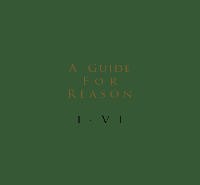
A Guide For Reason - I - VI (fs13)
1) A Handful Of Hours In A Split Second (The Events Of An Ordinary Day Pass Like Strangers On The Street As We Are Busy At Work Engineering Tomorrowland) - 13:29
2) Beauty In The Tools Of Today (With Which The Common Man Hammers The World Into Strangeness, The Quality In Such That Does Shake Us) - 6:55
3) The Radiant Life - 10:12
4) The Important Thing Is To Never Stop Questioning - 4:35
5) Time: The Solution To The Problem Of There Being No Solutions - 8:24
6) Out From Which Comes The Beginning - 13:26
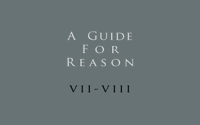
A Guide For Reason - VII - VIII (fs14)
1) The Indirect Communication - 17.00
2) One Of These Is True. This Is True. - 4:00
160kb SOUNDBITES CAN BE HEARD ON THE SOUNDPAGE
Available in CD format (while supplies last) and Digital Editions
REVIEWS:
from Heathen Harvest:
A Guide For Reason - I - VI
Two decades ago, the New York-based label Faith Strange came into being in ethereal fashion with the release of Life With The Lions’ debut cassette “…of Dream Days”, a cassette that took two years to follow up on with the eventual CD release of “…These Dream Days”. If any fan of the label at that point in its infancy thought that was a long wait, however, they were in for a real surprise when Faith Strange would not re-emerge until 8 long years later with orchestramaxfieldparrish’s “Tears” and a double-dose of releases from the incredibly talented Jo Gabriel. Of course, Jo Gabriel has since moved on to releasing her own music via her own label in Ephemera while orchestramaxfieldparrish remains with Faith Strange due to its obvious relation to the label; that being the man behind everything, including “A Guide For Reason”, one Mike Fazio. It goes without saying that Mr. Fazio has been busy, but he’s been actively recording and releasing music since the early 80′s — nearly three decades of underground dwelling and experimentation, consistently building on the cultural foundation of New York’s inherent strange nature as one of its most criminally overlooked experimental veterans.
For all intents and purposes, A Guide For Reason is Mike’s second newest moniker to date, right behind, ironically, simply releasing music as “Fazio” for the recent “Élégie” (Faith Strange) and “All At Once The Remote Go Forth My Soul And My Seeking, The Unknowable Becomes Known” (Quiet World) albums, both released this year. orchestramaxfieldparrish obviously goes back a bit further to the mentioned 2002 album, but even this project took a long rest until it re-emerged in 2008-2010 for a slew of releases on the suddenly prolific Faith Strange. He was also a member of “Chill Faction” in the late 80′s and recently in 2006 released a new album. Lastly, again in 2006, he released “Sundiving” — a collaborative effort between he and percussionist Thomas Hamlin (Black 47). So the question remains as the elephant in the room: Where the hell was Fazio during this 6-8 year period? I wish I had the answer — perhaps he simply got fed up or burnt out, but it’s as if he suddenly disappeared completely from the face of underground music only to re-emerge later as a proverbial phoenix, setting fire to the world through an onslaught of new output.
Alright, so perhaps that’s a little melodramatic, but like the mythical bird mentioned, Fazio creates music that is both abstract and yet not completely unfamiliar. There is an ethereal beauty that accompanies so many of his tracks as they climb a fragmented path of performance, weaving through moments of drone, musique concrete, subtle and very sparse trip hop-like beats, and absolute, pure abstract sound structures. Loops range through tracks, orbiting amongst each other but often existing so far out of context and in time that they barely resemble a loop at all without a relative level of concentration. Emotional moments can range from the mostly psychedelic to the all-encompassing disturbance of industrial-tinged ambience. Somehow though, the sound on “I – VI” always seems to retain a warm analog sound, sometimes bordering on an all-out retro electronic style that is fitting of the gold-on-olive drab artwork which accompanies the old school computer latches of the inside image. It’s like a polished relic from the early era of field recording experimentation with heavy processing and a healthy dose of seemingly randomized sound input and the occasional feedback squeal or muffled voice sample. As with any quality music in the Musique Concrete world though, it’s the subtleties in production that make Fazio’s creations masterful. The fluctuation of layers to give them depth, the barely noticeable high-end clicks, the swelling moments of bright yet transparent ambience — they all combine to make something all together unique and impressively complex.
Though Fazio’s track titles are often lengthy if not excessively descriptive — a quality that he has become known for if nothing else — it still becomes difficult to place where his mindset is overall regarding an overall theme to an album. Time here is obviously an incredibly important aspect but there’s more at work than just that. Social messages can be found easily such as in the title of the first track, which is suggestive of the modern habitual process of working our lives away, only to realize in the Winter of our lives that we existed in a blurred state, allowing the world to spin us into oblivion without so much as a whisper. The second track can be seen as an abstract, almost Slavoj Žižek-like commentary on the fragmented state of mankind’s delusions involving ecology — though through a very strict perspective on modern machines. Perhaps I may be reading a little too much into his intentions, but it goes without saying that Fazio seems to have a lot to say without actually expressing it with voice in his music — one more reason to consider him amongst what I consider to be the unsung contemporary masters of the Musique Concrete style of experimentalism alongside more well-known names such as Daniel Menche. - Sage
from Musique Machine:
A Guide For Reason - I - VI
The New York art punk/funk scene of the mid to late eighties first saw Mike Fazio playing guitar alongside a few friends and acquaintances to form a small network of bands including Chill Faction, Black 47 and Life With The Lions. After a seemingly inactive nineties he remerged as orchestramaxfieldparrish, a solo project where he developed his guitar playing into nebulous, ambient waves, adding synthesised layers to form lush, ambient orchestrations. But little of this background is discernible on this new project of Fazio’s recorded in June 2009, which blends an array of field recordings with idiosyncratic electronics to form six compelling collages.
‘A Guide for Reason’ was how Ptolemais of Cyrene, a musicologist from over 2,000 years ago no less, saw the role of perception or sensory experience in sparking a more theoretical compositional process, perhaps suggesting that the work presented here is primarily sensual, designed to inspire the listener to form their own narratives. Meanwhile the often lengthy track titles all seem to be aphorisms optimistically guiding the listener on how to perceive.
But the sound of ‘A Guide For Reason’ is a loose and strange one that feels more like a single, hour long work than six distinct pieces. The first half is like a slide show of alien anecdotes, from the opener’s series of textured shifting electronic shards that disappear no sooner than they arrive framed by a deep silence or undercut by the odd percussive pop, to other glitchy fragments that get slowed, reversed, scratched and sprayed with static that overlap tracks 3 and 4. Despite the uneven panoply, the disk feels like it is heading somewhere and that place is ‘Out From Which Comes The Beginning’, the final 13 minutes of the disk that orchestrates a series of whirring metallic tones possessing the ‘ribbed’ qualities of a plastic card strumming the spokes of a spinning bicycle wheel. Like a cabaret plate-spinner the tones eventually falter and require regular recharging while deep, resonant liquid notes and hi-pitched whistles subtly form a shifting backdrop. Surprisingly, the striking irregularities are smoothed out across the last three minutes by a regular Autechre-lite beat that skips and shuffles the disk to an uncharacteristic close.
Most unusual, though, for a largely abstract electronic work is the optimistic feel that Fazio works into the mix. This is not your typical so-called ‘dark ambient’ work that tends to describe a post-apocalyptic misery, but feels more like a Life magazine article from the 50s that optimistically welcomes future feats of engineering. In this way, ‘A Guide for Reason I – VI’ comes on like a literal form of industrial music by celebrating engineered processes and patterns through sound. And while the sleevenotes indicate electrical generators and diesel locomotive engines as some of the sound sources, Fazio has processed the results with such clean and microscopic detail that the sounds easily transcend their significance, creating a charming and mysterious montage - Russell Cuzner
from ChainDLK:
You might be familiar with Mike Fazio under his orchestramaxfieldparrish nom de plume, an arty ambient electronic soundscape project I reviewed a while back. As I recalled with OMP, my impressions were mixed on that double-CD ('To The Last Man / Index Of Dreaming'), liking some of it a whole lot, and the rest of it very much. Fazio's A Guide For Reason project may be similar in overall concept but quite different in execution. The majority of it is extremely subtle; so subtle at time that unless you have the volume up you may not realize (at times) that you are listening to anything. That's not to say that there isn't anything there (there most certainly is) but 'A Guide For Reason' has a propensity to often be so under the radar that when more prominent incidents such as a repeated scratching sound, or a chordal swell, or wispy electronics make there way into the ambience, it's nearly surprising.
One could approach 'A Guide For Reason' in two ways; one is the analytical approach- to listen to it looking for things that gel and enhance the ambiance all the while trying to discern why the artist used this sound or that, and how these sounds were achieved, OR, the intuitive approach- simply feeling what is conveyed sonically in each piece and how it affects you. I favor the latter here as describing the components of the compositions does not really do them justice.
This work is two discs (or actually a disc-and-a-half, the second being a 3" mini disc (or Parts VII and VIII) and is only a little over what a single CD is terms of time, I'm sure the artist had his reasons for doing it this way. The environments on the first disc take you to some unusual places'¦hallucinatory terrains where space and time have been altered, perhaps distorted into other dimensions. The last track on the first disc, #6 ' 'Out From Which Comes The Beginning,' is the anomaly. It is as if the film is rewinding and you get a peek at the inner-workings of the cosmic device. A gentle rhythm emerges like some type of electro-mechanical dance of creation and carries you across the border'¦to the other side.
Disc 2 (the 3 inch) ' 'The Indirect Communication' ' here is where the other-worldly entities dwell. You watch in fascination as they interact in their natural habitat. 17 minutes goes by but all concept of time is lost here. 'One of These Is True. This Is True' is a bit more difficult to fathom. In fact, I can't, even after listing to it three times.
The main CD comes in a limited numbered edition of 100 professionally pressed silk-screened discs in a 4 panel digipak. The 3" is a limited numbered hand made micro edition of 50 copies presented within a handmade vellum folio of 4 prints with the disc mounted on artist's black archival board. Sure to become a collector's item. - Steve Mecca - November 2011
from Musique Machine:
A Guide For Reason - VII - VIII
Mike Fazio's (of orchestramaxfieldparrish, Gods Of Electricity & solo work) latest project, A Guide For Reason, debuted this very year with a full length CDr titled "I - VI", and now continues with this fascinating 3" disk, "VII - VIII". I was hitherto acquainted with his colorful, dramatic forays into synthscaping as Aera, but the sophisticated exactitude and uniqueness of this disk caught me by surprise. One could say the two projects share a meditative, existential approach to music-making, but in the case of A Guide for Reason, the sound sources utilized by Fazio are completely indiscernable to me, and the music itself several steps closer to 'unclassifiable'.
"The Indirect Communication", a 17minute track which is the majority of this short disk, is a masterfully captured document of some fantastic (likely imaginary!) object vibrating in the soft wind, in the currents (over silence). The gentle activity continues uneventfully, abating for longer intervals at times, stirring back to life on a whim. The most sudden movements bring crystalline feedback harmonics which quickly bleed away, and swells of motor-like whirrings. The harmonic wake created by the restless object covers a vibrantly consonant tonal spectrum, sketching out glassy apparitions of sublime chords, and the granular, synthetic nature of the textures become apparent. There is a metallic element to the timbre, but no harsh high frequency resonance as is typical of metallic sounds. Rather, these percolated sounds are closer to the round, bassy tones achieved when metal meets water.
I was left with a thoughtful, solemn feeling not unlike sitting at home on a quiet rainy day. This is a somewhat subjective impression, but I do believe this music is intended to examine solitude and moments of calm.
The other track, which is essentially a 4 minute epilogue, is called "One Of These Is True. This Is True." It enters with a brooding synth drone straight out of an Aera album, revealing the chordal framework behind Fazio's ideas. Trebley crackles of digital distortion mount as the chord swells, until it gives way to droning major key arpeggios which, though obviously created by a synth, retain some of the essence of the first track's organic timbres. Ending this perplexing disk on this more obvious emotional note was, in my opinion, a marvellous idea.
What Fazio has achieved here introduces human expression and intentional beauty into the skittering entropy of the sounds of nature... or is it the other way around? Are these processed field recordings or just incredibly organic electronics? It's like hearing a drop of water beat out its irregular, unpredictable patterns, and yet feeling sure that there is a clear, almost poetic message to be understood. Any fan of experimental music possessed of a little patience would do well to check this out.
Josh Landry - September 2011
from Cyclic Defrost:
I was first made aware of the joyful (mostly subdued) noise that New Yorker Mike Fazio produces whilst reviewing orchestramaxfieldparrish’s Crossing Of Shadows, a journey through the seamy underbelly of guitar tones and ambient rumble, that hinted at both industrial/isolationist bleakness and the tie-dyed variety of entopic drift currently doing the rounds on limited cassette releases. Fazio’s unleashed a new moniker for these new soundscapes, A Guide For Reason — apart from eschewing the odd orchestral element and delving deeper into experimental tangents, these two limited release CDs (100 of the full-length and 50 of the 3” CD) could have been quite suitably released under the orchestramaxfieldparrish moniker. Actually,saying that, I’m a big fan of artists who obfuscate their sonic footprint with a panoply of monikers, just check out the work of Wolfgang Voigt or Uwe Schmidt if your want a primer on limitless non-de plumes.
A Guide For Reason sees Fazio descend further underground where hums, splutters and mysterious industrial relics moulder, and entropy reclaims what is not guarded against. Indeed, certain elements of these explorations were recorded 50 feet under the bustling terminus of Grand Central Station. ‘A Handful Of Hours In A Split Second (The Events Of An Ordinary Day Pass Like Strangers On The Street As We Are Busy At Work Engineering Tomorrowland)’ bursts into existence with wow & flutter, space echo, static and menace, linked together in the manner of Nurse With Wound’s mid-80s opus Spiral Insana. As this opening piece progresses a more linear narrative is suggested by the emergence of sonorous tones and space-bound pings. ‘The Radiant Life’ satisfies fully, as uneasy chorale frequencies and muffled accents unfold a lopsided collision between Popol Vuh and Coil (the sadly missed Peter Christopherson is thanked in the liner notes). ‘The Important Thing Is To Never Stop Questioning’ sounds like a passable representation of tectonic plates shifting and groaning, as an avalanche of barely audible bass pricks the ears. Most striking is Fazio’s closing gambit ‘Out From Which Comes The Beginning’ where rich guitar textures and manipulations are turned inwards into curious percussive simulacra, as a handheld electric fan (possibly) ricochets off the strings, like a troglodytic, sweaty Keith Rowe impersonator. Curious insects scuttle and chirrup as frenetic tinsel-tones and deep feedback resonate in synch, reminding me of the visceral impact of Oren Ambarchi’s extended techniques. The track finishes with a memorable three-minute cascade of syncopated drums slowly tweaked and layered beneath the fan-like guitar sonics.
On the three-inch CD, the shimmery textures from the initial recording session are reprised, and slowly groan and throb their way into something akin to listening to Chris Abrahams’ magnificent Play Scar from the bottom of a stormwater drain. Sine waves and crashing stochastic pulses aim for the heart of the sun, only to fall Icarus-like into an abrupt silence, followed by further sonic sorcery resonating through the hidden tunnels of Grand Central Station. For A Guide For Reason, Fazio’s Raison D’être for this project is that “This music has no purpose other than it is”, which echoes both Everest pioneer George Mallory and the sound-for-sounds-sake ethos of generations of improvising musicians. - Oliver Laing
from Wonderful Wooden Reasons :
A Guide For Reason - VII-VIII
A Guide For Reason is one of the newer nom de guerres of orchestrmaxfieldparrish's Mike Fazio. Under this guise, Mike assumes a more psychedelicised mode interlacing beautiful almost-minimalist glitters into a latticework of sound. His sounds (mostly sourced, I suspect, from his guitar) have a decidedly alien flavour to them. but alien of the Forbidden Planet's Krell variety rather than that whole messy and decidedly uncouth chest bursting, acid bleeding type. Mike's got other vistas in mind and he takes the time to explore them fully. We are lucky enough to be allowed along for the ride.
from Vital Weekly:
Mike Fazio is one half of Gods Of Electricity of whom a CD was reviewed in Vital Weekly 527 and of whom I totally forgot, I must say, but here he is again, this time as 'A Guide For Reason', with a CDR already recorded in 2009 and a 3"CDR sort of companion release recorded this year. I have no idea why this took so long to release, but the digipack looks nice, and so is all of the design here, very stylish. 'This music has no other reason than it exists', says Fazio, and why not. Why should there another reason indeed. On 'I-VI' there are six long tracks of electronic music; the cover mentions a recording of diesel locomotive engines, and thank you's for Ferial Confine, Mark Schomburg and Peter Christopherson. The music is experimental, and despite the diesel engines not very noise like. Lots of computer treatments it seems. One of those things I noted before, with Gods Of Electricity, is that then as well as now, these pieces are a bit long, although the music here is of an entirely different nature. Things work not as much as a composition, but more like a stream of sounds, vaguely nodding to ambient at times, to microsound/glitch music, and a bit towards gentle noise. Spooky at times, and I thought of this as quite nice. Not spectacular innovative or any such thing, but very nice altogether. A leap forward from the old Gods Of Electricity release. (FdW)
from Wonderful Wooden Reasons:
A Guide For Reason - I-VI
A Guide For Reason is a pseudonym for New York Composer Mike Fazio who is better known around these here parts as Orchestramaxfieldparrish. Under both guises Mike's music has an inherent ambient quality. His music is always richly textured and beautifully composed (in both senses of the word).
With A Guide For Reason he has taken this quality and re-imagined it in a vaguely surrealist context. There is an ominous nocturnal psychedelia entwined within the ambience that gives the music a deliciously alien character and there's a lot more mobility both within and between tracks here than is often the case. Fluid changes in texture, colour and shape create a constant but not insistent pull on the listener compelling you to follow it's lead.
I'm always impressed by Mike's music but never more so than here.
August 2011
from Bad Alchemy:
OUT FROM WHICH COMES THE BEGINNING heißt auch das letzte Statement auf I - VI (fs13), einem 'ongoing abstract, exploratory & left-field musical endeavor', das Fazio A GUIDE FOR REASON taufte. Der gedankliche Hintergrund ließ ihn Titel aus suchen, die man in Marmor meiseln könnte: A HANDFUL OF HOURS IN A SPLIT SECOND (THE EVENTS OF AN ORDINARY DAY PASS LIKE STRANGERS ON THE STREET AS WE ARE BUSY AT WORK ENGINEERING TOMORROWLAND). Oder: BEAUTY IN THE TOOLS OF TODAY (WITH WHICH THE COMMON MAN HAMMERS THE WORLD INTO STRANGENESS, THE QUALITY IN SUCH THAT DOES SHAKE US). Und: THE IMPORTANT THING IS TO NEVER STOP QUESTIONING. Die Klangbilder dazu sind loop- und delay-generiert, vom Hämmern und Kreisen und der Betriebsamkeit des Industriezeitalters bestimmt. Der Sound von Generatoren und Lokomotiven sind als Ingredienzen eingebacken in Klingeln, grummeliges Brum men, Heulen, Klopfen, flatterndes Rauschen. Dem Fazio den Effekt andichtet, das Gewöhnliche strange, fremd und fragwürdig erscheinen, ja eigentlich sogar fremd werden zu lassen. Als Poesie, als Schönheit in langwelligen oder auch pumpenden, immer aber harmonisch schimmernden Drones. Der Synthie als Orgel für Tomorrowland. TIME: THE SOLUTION TO THE PROBLEM OF THERE BEING NO SOLUTIONS ist dagegen abstrakt geräuschhaft - Gebläse, Rotationen, extrem verlangsamte Deto nationen. Der letzte Track forciert noch das Bruitistische und Motorische, wummernd und mit dem Geflatter eines Ventilators an Gitarrensaiten. Echos versetzen einen in einen containerartigen, von Surren erfüllten Hohlraum, den zuletzt ein Drum'n'Bass-Groove in Wallung versetzt.
VII - VIII (fs14, 3" mCD) reißt ein Loch in den Container - Ausblick auf grüne Hügel. Klanglich jedoch suggeriert THE INDIRECT COMMUNI CATION zuerst in nahtloser Fortsetzung von 'VI', glucksend, sirrend, aufgewühlt, etwas Hohles und Wässriges. Auch 'VIII' ist in diesem gedämpften 'Innen' befangen, ver schluckt sich sogar selbst. Bis eine große Dröhnwelle über die Szenerie wegbraust, gefolgt von kleinen Orgelwellen, die auf einen wieder offenen Horizont zu schwingen. Vielleicht höre ich nur, was ich hören will. Aber was wären Suggestionen ohne Spekulation? [BA 70 rbd] - August 2011
from textura:
A Guide For Reason presents Mike Fazio operating under a guise other than his customary orchestramaxfieldparrish alias. Though the new material—by his own reckoning, “electronic aural sculpture” that's “abstract, exploratory & left-field”—hews more to the noise-&-post-industrial part of the sonic spectrum (think Coil, The Hafler Trio, et al.), it conceivably could have been issued under the orchestramaxfieldparrish moniker, simply because the recordings he's issued under the name are already so wide-ranging that it could have accommodated the A Guide For Reason tracks too, had he been so inclined to present them as such. No matter—the eight tracks presented on the limited-edition full-length (100 copies) and three-inch EP (50 copies) are an engrossing lot no matter the name under which they're issued, and it appears that the shift in focus to what for Fazio amounts to an even more personalized form of abstract expressionism has proven both cathartic and liberating for this always adventurous explorer. The full-length's content was shared initially with friends and like-minded artists only, but the decision was subsequently reached to make it available in a wider form, though not for reasons of commercial or personal gain but more to grant it a life of its own. No gear-related info is included, but the sounds on offer appear to include samples of varying kinds, field recordings, electronics, and a heavy dose of synthesizers, though for all we know Fazio might have used guitar to generate much of it and used treatments of one kind or another to effect the synthetic simulations.
While the opening track, “A Handful of Hours in a Split Second (The Events of an Ordinary Day Pass Like Strangers on The Street as We Are Busy at Work Engineering Tomorrowland),” careens into view with a daunting noise flourish, it immediately thereafter settles into a more even-tempered space. As a whole, the piece assumes the form of a constantly mutating travelogue that segues rapidly from one industrial-tinged episode to another until coming to rest in an extended intergalaxial rumination. The mood of “The Radiant Life” is anything but sunny, as the piece trudges along, dragging dungeon-styled clanks and muffled voices along with it as it does so. The album gravitates towards more overtly experimental territory during its second half. The focus on the connecting tracks “The Important Thing is to Never Stop Questioning” and “Time: The Solution to the Problem of There Being No Solutions” is on field recordings-based soundscaping that appears to draw upon natural elements (wind, rumble) and present them in heavily distorted form. By turns and sometimes simultaneously, “Out From Which Comes the Beginning” unspools as a whirring-and-clattering dronescape and ghostly hall-of-mirrors (until, that is, a breakbeats episode surfaces during its final innings, shifting the piece into another direction altogether).
Why issue the eight tracks on two separate discs? One reason may be that the full-length's tracks were recorded in June, 2009 whereas the EP's were laid down two years later ( the next installment is currently scheduled for fall 2011 release). The latter's opener, “The Indirect Communication,” initially suggests that the EP may be a bit more sedate than the full-length, but the electrically spiked track gradually grows noisier and hotter to the touch as its seventeen minutes unfolds. It's as much of a shape-shifter as the opening piece on the full-length, with “The Indirect Communication” touching down in multiple zones of ethereal abstraction before “One of These is True. This is True” completes the journey with a shimmering soundscape of beatific character. Fazio has stated in reference to the A Guide For Reason project, “This music has no purpose other than it exists,” but even if that were to be its sole purpose it would be more than enough, given that it affords us another opportunity to partake of his singular artistry.
May 2011
|
|
|
|
|





















